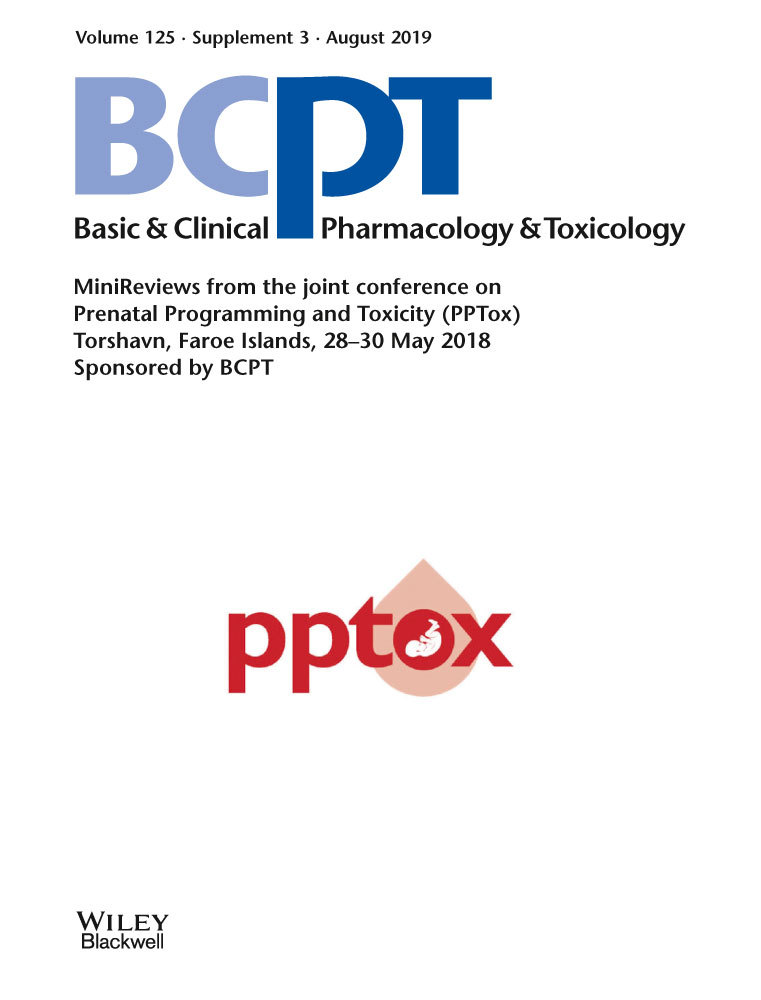Development priority
Corresponding Author
Philippe Grandjean
Department of Environmental Health, Harvard T.H. Chan School of Public Health, Boston, Massachusetts
Department of Environmental Medicine, University of Southern Denmark, Odense, Denmark
Search for more papers by this authorGail S. Prins
Chicago Center for Health and Environment (CACHET), University of Illinois, Chicago, Illinois
Search for more papers by this authorPal Weihe
Department of Public Health and Occupational Medicine, Tórshavn, Faroe Islands
Search for more papers by this authorCorresponding Author
Philippe Grandjean
Department of Environmental Health, Harvard T.H. Chan School of Public Health, Boston, Massachusetts
Department of Environmental Medicine, University of Southern Denmark, Odense, Denmark
Search for more papers by this authorGail S. Prins
Chicago Center for Health and Environment (CACHET), University of Illinois, Chicago, Illinois
Search for more papers by this authorPal Weihe
Department of Public Health and Occupational Medicine, Tórshavn, Faroe Islands
Search for more papers by this authorCONFLICT OF INTEREST
The authors declare no conflict of interests.
REFERENCES
- 1 National Research Council (U.S.). Committee on Pesticides in the Diets of Infants and Children. Pesticides in the Diets of Infants and Children. Washington, DC: National Academy Press; 1993.
- 2Grandjean P, Bellinger D, Bergman A, et al. The Faroes statement: human health effects of developmental exposure to chemicals in our environment. Basic Clin Pharmacol Toxicol. 2008; 102(2): 73-75.
- 3Grandjean P, Abdennebi-Najar L, Barouki R, et al. Timescales of developmental toxicity impacting on research and needs for intervention. Basic Clin Pharmacol Toxicol. 2019; 125(S3): 70-80.
10.1111/bcpt.13162 Google Scholar
- 4Heindel JJ. The developmental basis of disease: Update on environmental exposures and animal models. Basic Clin Pharmacol Toxicol. 2019; 125(S3): 5-13.
10.1111/bcpt.13118 Google Scholar
- 5Lee MK, Blumberg B. Transgenerational effects of obesogens. Basic Clin Pharmacol Toxicol. 2019; 125(S3): 44-57.
- 6Sunyer J, Dadvand P. Pre-natal brain development as a target for urban air pollution. Basic Clin Pharmacol Toxicol. 2019; 125(S3): 81-88.
- 7Soffritti M, Giuliani L. The carcinogenic potential of non-ionizing radiations: The cases of S-50 Hz MF and 1.8 GHz GSM radiofrequency radiation. Basic Clin Pharmacol Toxicol. 2019; 125(S3): 58-69.
10.1111/bcpt.13215 Google Scholar
- 8Prins G, Patisaul HB, Belcher SM, Vandenberg LN. CLARITY-BPA academic laboratory studies identify consistent lowdose Bisphenol A effects on multiple organ systems. Basic Clin Pharmacol Toxicol. 2019; 125(S3): 14-31.
10.1111/bcpt.13125 Google Scholar
- 9vom Saal FS. Flaws in design, execution and interpretation limit CLARITY-BPA’s value for risk assessments of bisphenol A. Basic Clin Pharmacol Toxicol. 2019; 125(S3): 32-43.
10.1111/bcpt.13195 Google Scholar
- 10Grandjean P, Eriksen ML, Ellegaard O, Wallin JA. The Matthew effect in environmental science publication: a bibliometric analysis of chemical substances in journal articles. Environ Health. 2011; 10: 96.
- 11Sobek A, Bejgarn S, Ruden C, Breitholtz M. The dilemma in prioritizing chemicals for environmental analysis: known versus unknown hazards. Environ Sci Process Impacts. 2016; 18(8): 1042-1049.




